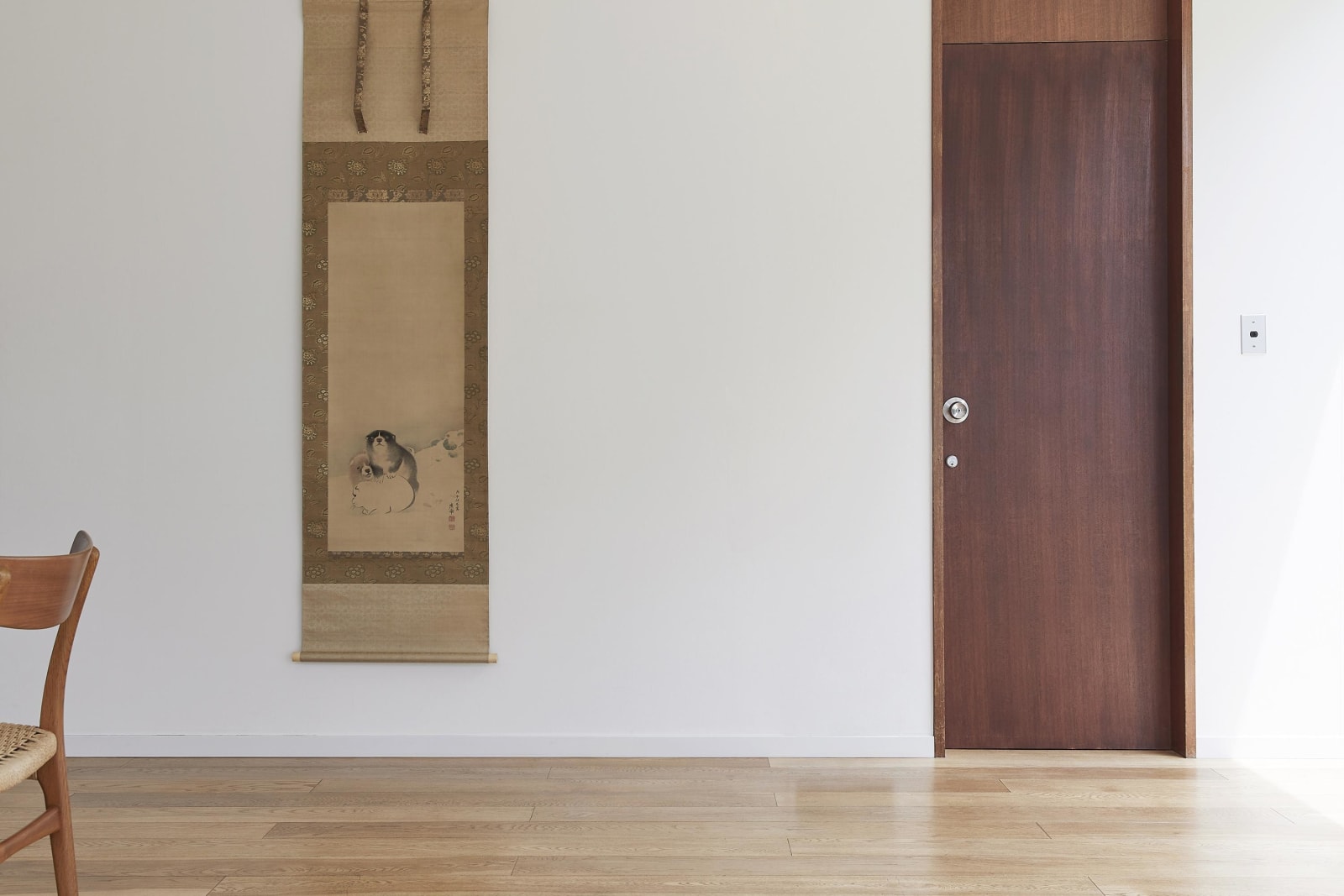Maruyama Ōkyo (1733−1795)
Three Puppies in the Snow
Color on silk, hanging scroll
Dated Temmei 6 (1786)
With box authentication by Tani Buncho (1830), double boxed
Seals: Okyo no in, Chusen
100.5 x 49.5 cm
191 x 54 cm (overall)
Further images
Three young puppies lie one upon another on the snow-covered ground. To the bottom right corner of the painting, there are some saxifrages buried under the snow, which is the only other motif depicted. This work somehow possesses a sense of timelessness, and its representation of the adorable puppies still appears fresh to our eyes. The black puppy looking towards the audience rides on the white puppy laying with its side body facing the audience. This composition is not unusual for Okyo, neither in paintings of dogs nor of other motifs. It is found in his Horsetail and Rabbit dated three months earlier than the present work, and in Two Deer dated in the eighth month, 1783. Such composition in turn requests the audience’s direct gaze towards the painting. Moreover, Okyo’s figures and animals which face the audience usually straightly engage us. In the present work, however, instead of looking out to us the audience, the black puppy is staring at the white puppy in a mischievous manner, while the brown puppy hidden behind is gazing us straightly. Okyo is by no means the only painter in the Edo period who challenged realistic depiction. However, what made him stand out among the many is his excellent strategy of connecting the pictorial space with the audience’s space.
Maruyama Okyo (painter; 1733−1795)
Also known as Sensai; Chusen; Issho; Kaun; Senrei; Mondo.
Tamba-born late Edo period painter and the progenitor of the Maruyama School. Learned the Kano School painting technique under Ishida Yutei. Remarkably integrated the Song and Yuan dynasties painting techniques and the Western perspective method into Yutei’s shasei (direct observation from life) technique, and formed his distinctive style. Excelled at animal and botanical shasei paintings.
Maruyama Okyo (painter; 1733−1795)
Also known as Sensai; Chusen; Issho; Kaun; Senrei; Mondo.
Tamba-born late Edo period painter and the progenitor of the Maruyama School. Learned the Kano School painting technique under Ishida Yutei. Remarkably integrated the Song and Yuan dynasties painting techniques and the Western perspective method into Yutei’s shasei (direct observation from life) technique, and formed his distinctive style. Excelled at animal and botanical shasei paintings.









